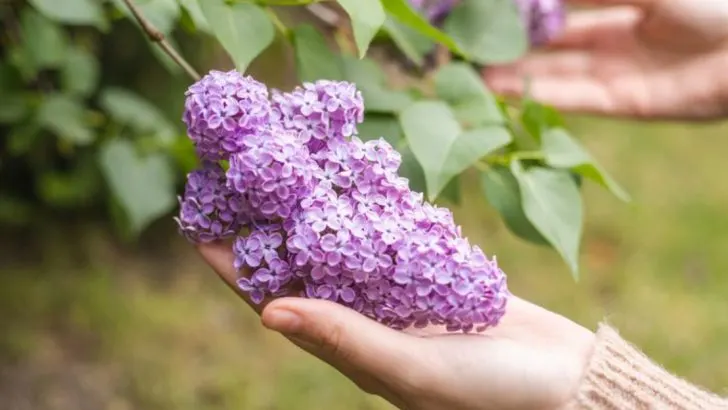Pruning is an essential gardening practice, but some plants actually thrive when left untouched in early spring. Allowing certain plants to grow naturally can encourage healthier blooms, provide shelter for wildlife, and support stronger root development.
Whether you’re growing flowering perennials, shrubs, or native species, these 25 plants will benefit from a hands-off approach in spring, rewarding you with lush, vibrant growth throughout the season.
Hydrangea
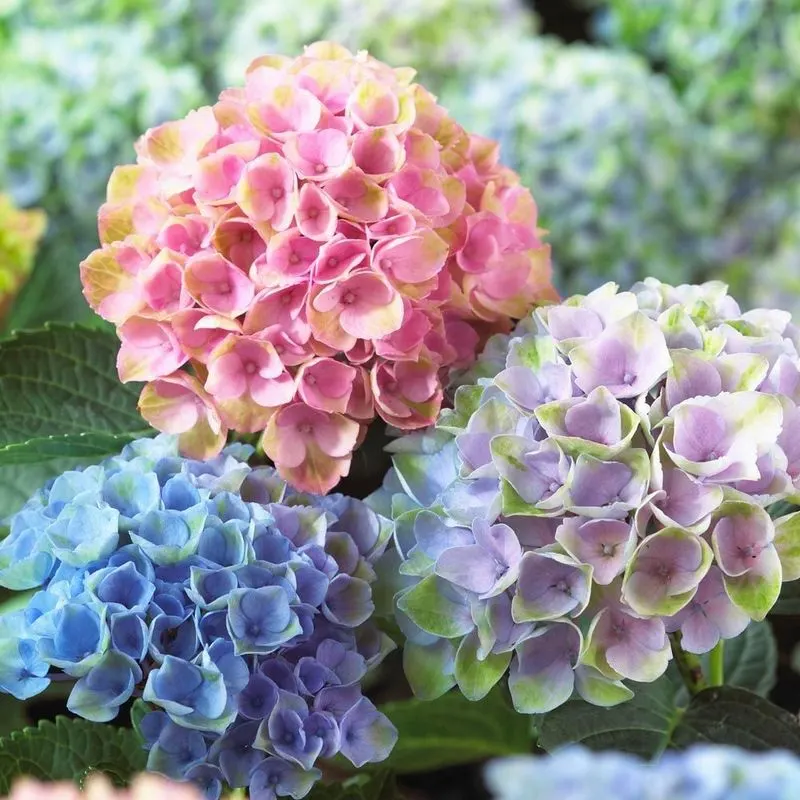
Famed for their dramatic blooms, hydrangeas benefit from being left unpruned in spring. This allows the plant to utilize its energy in nurturing the burgeoning buds. The result? A more robust display of flowers come summer. During this time, the plant’s natural structure strengthens, promoting resilience against pests and harsh weather. Avoiding the shears also lets gardeners witness the plant’s organic growth patterns, adding a touch of wild beauty to any garden space. By allowing hydrangeas to grow freely, you foster a natural elegance that requires less maintenance in the long run.
Clematis
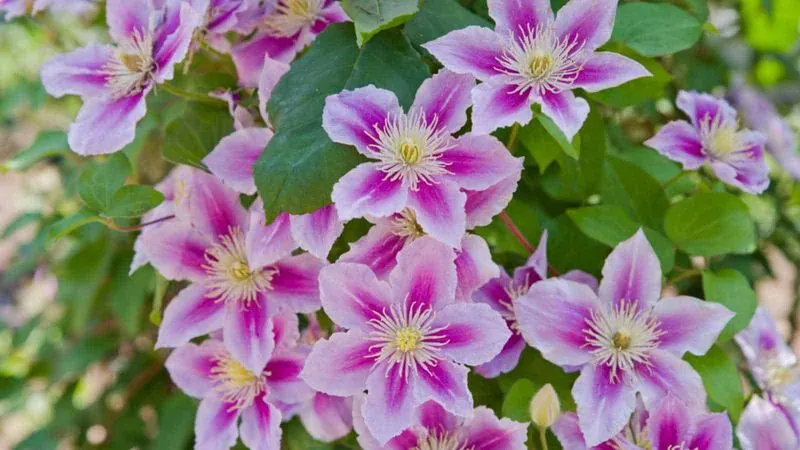
Clematis is a climber that rewards patience. Letting it grow unpruned in spring encourages a dense array of flowers. The vines naturally seek structures, turning trellises and fences into floral masterpieces. As temperatures rise, these blooms create a stunning, layered effect. Moreover, unpruned clematis will have a stronger root system, anchoring it firmly against spring storms. The intricate weaving of tendrils adds depth and texture to a garden. By stepping back, gardeners allow clematis to showcase its full potential in vibrant, cascading displays that captivate all who pass by.
Forsythia
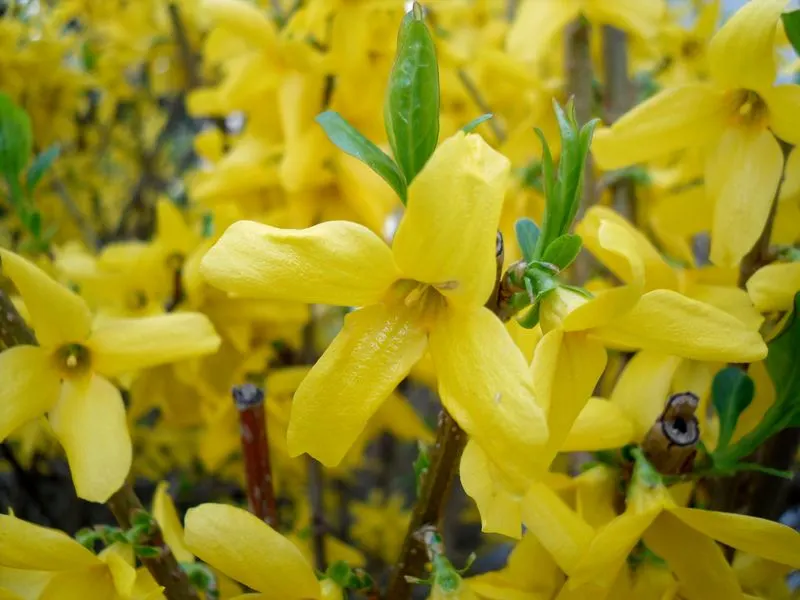
Forsythia bursts into life with a vivid yellow display, signaling spring’s arrival. Forgo pruning during this season to enjoy the full spectacle of its blooms. This shrub thrives when left to its own devices, creating a natural shape that delights the senses. Unpruned, forsythia establishes a solid framework that withstands the test of time. The flowering branches add brightness to any garden, offering a joyful contrast to still-dormant plants. Letting forsythia flourish naturally provides a low-maintenance solution, with the added benefit of attracting pollinators to your garden’s ecosystem.
Rhododendron
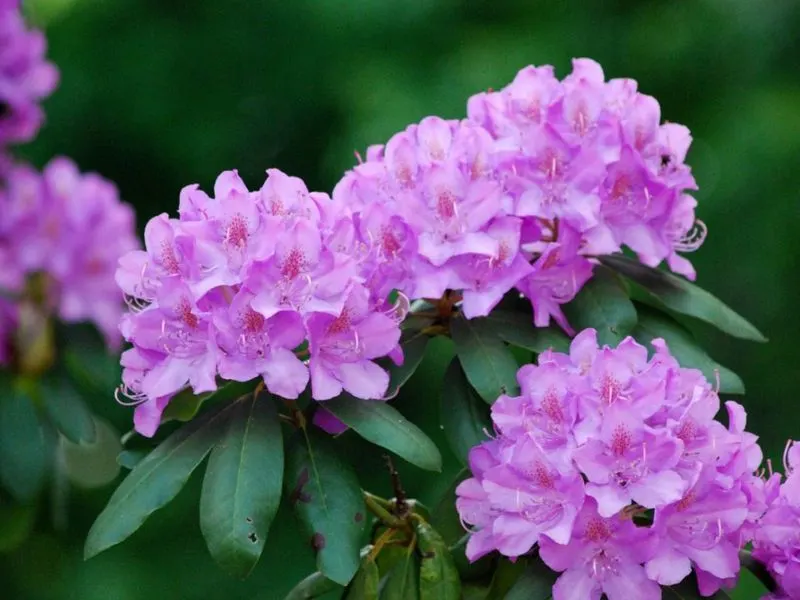
Known for their showy flowers, rhododendrons shine when left unpruned in spring. This approach allows the plant to focus on flower development rather than regrowth. The resulting blooms are often larger and more abundant. With their glossy foliage serving as a backdrop, the flowers create a striking visual impact. Unpruned rhododendrons also maintain a natural, graceful form, reducing the need for structural correction later. This hands-off tactic lets the plant adapt to its environment, fostering resilience and vigor. Enjoy a stunning, colorful display that enhances your garden’s aesthetic.
Wisteria
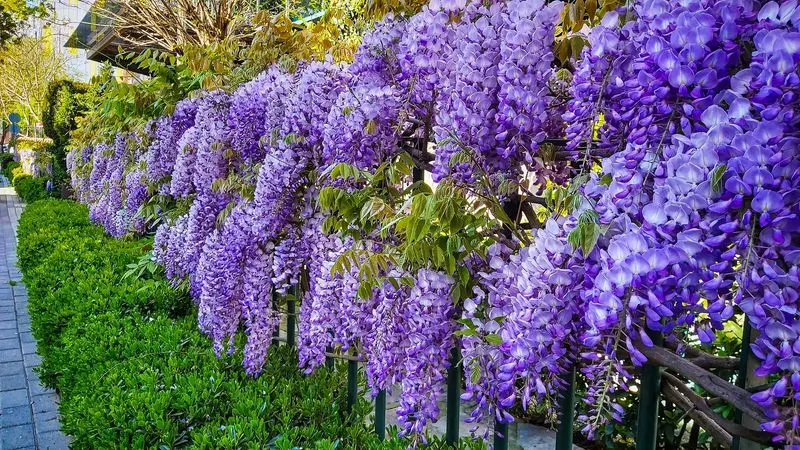
Wisteria, with its cascading blooms, is a plant best admired in its untamed state. Allowing it to grow unpruned in spring encourages a lush, floral waterfall effect. The vines will drape elegantly over structures, adding a romantic touch to gardens. As wisteria matures, its twisted, woody stems create intriguing patterns. Opting for a natural growth approach enhances its architectural beauty. Additionally, unpruned wisteria attracts a variety of pollinators, supporting the local ecosystem. This method offers a breathtaking display with minimal intervention, perfect for gardeners seeking effortless elegance.
Lilac
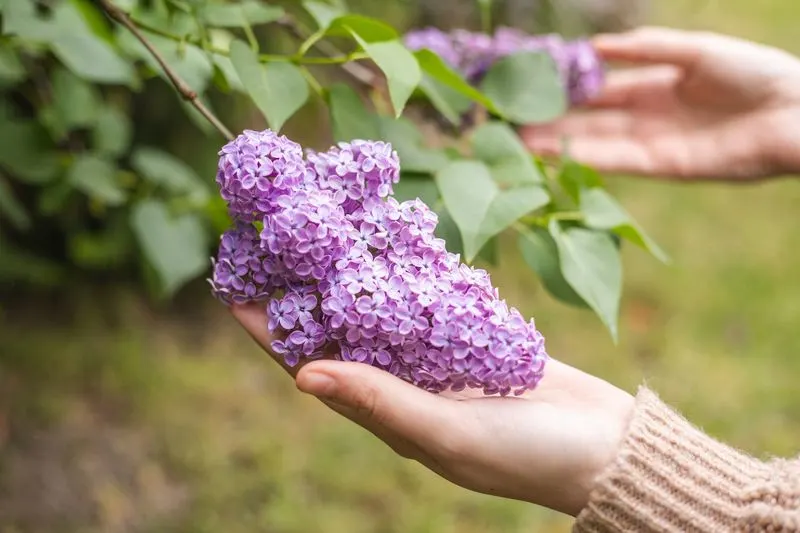
The intoxicating scent of lilacs is best enjoyed when the plant is left to follow its natural rhythm. Refrain from pruning in spring to allow the development of fragrant blossoms. This hands-off approach leads to a fuller, more charming bloom as the plant matures. Lilacs are known for their resilience, and unpruned plants often exhibit a sturdier structure. The swirling blossoms create a sensory experience, while the thick foliage provides shelter for garden wildlife. By embracing a minimal intervention strategy, gardeners can welcome the full, fragrant glory of lilacs into their spaces.
Cherry Blossom
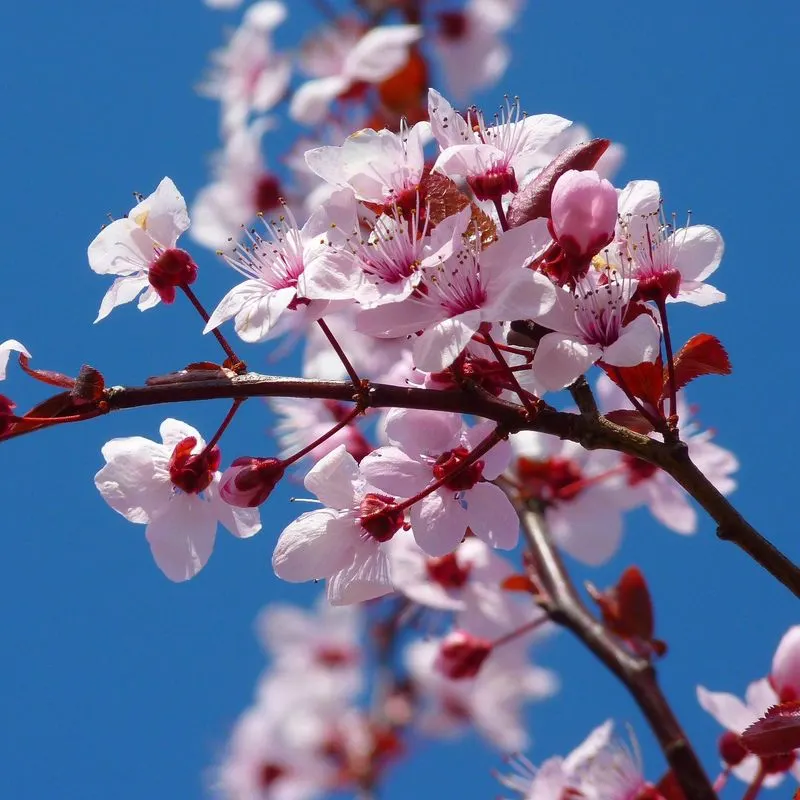
Cherry blossoms herald spring with their ethereal display of pink and white petals. Allowing these trees to grow unpruned enables a fuller canopy of blossoms. This natural approach not only enhances visual appeal but also strengthens the tree’s overall health. The falling petals create a serene atmosphere, reminiscent of a gentle pink snowfall. Unpruned trees develop a more robust framework, supporting abundant future blooms. This hands-off method also fosters biodiversity, providing food and habitat for various pollinators. Immerse your garden in the tranquil beauty of unpruned cherry blossoms.
Azalea
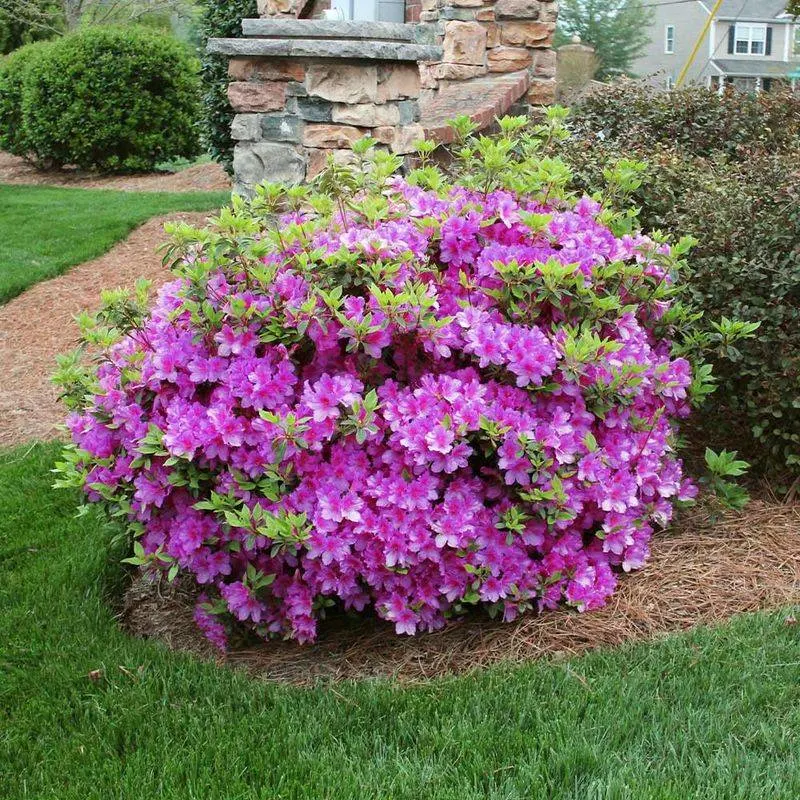
Azaleas, with their dazzling array of colors, truly flourish when left unpruned. Letting them grow naturally in spring ensures a more abundant bloom. This approach highlights their vibrant flowers, which can transform any garden space into a riot of color. By avoiding pruning, you allow the plant to develop a dense, bushy structure. This not only enhances the aesthetic appeal but also reduces the risk of disease. Azaleas thrive with minimal intervention, proving that sometimes less is indeed more. Relish the vibrant, carefree beauty that azaleas offer your garden.
Magnolia
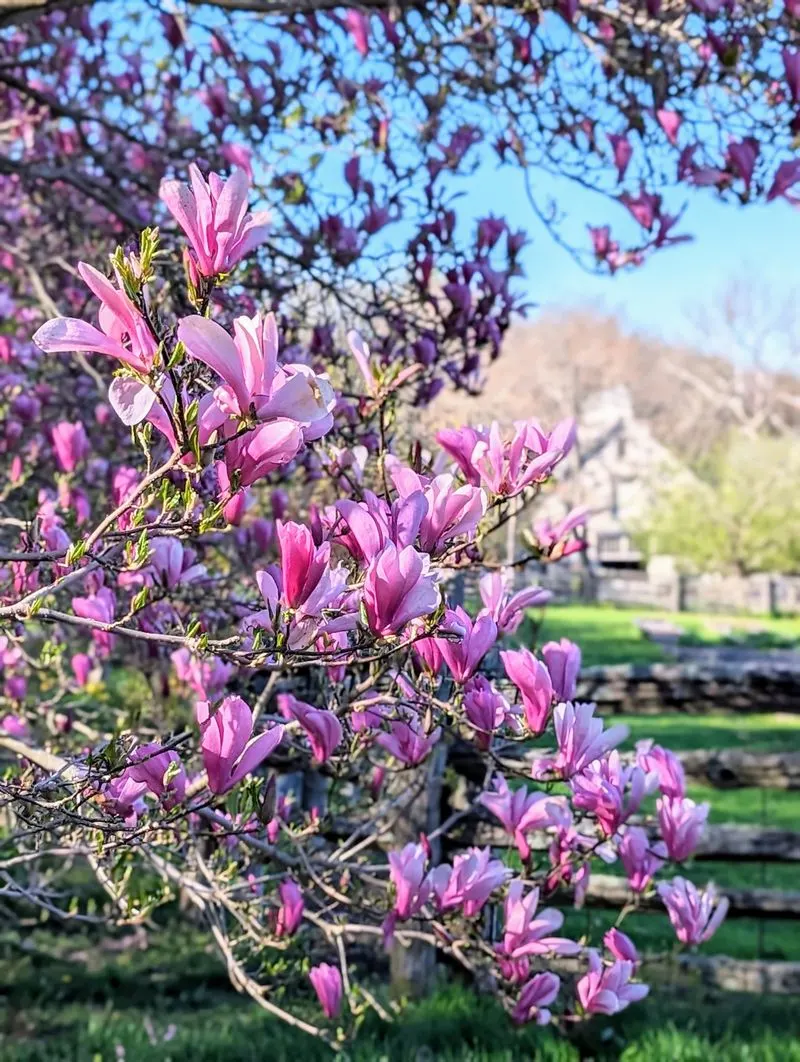
Magnolias stand as icons of spring beauty, best appreciated in their natural state. Forgoing pruning allows these trees to develop more robust and fragrant blooms. The large, waxy flowers create a breathtaking spectacle, drawing admirers from afar. Unpruned magnolias tend to have a healthier growth, focusing energy on blossom production. The majestic structure of the tree adds an architectural element to gardens. This minimal intervention approach not only ensures a stunning floral display but also supports the tree’s overall health. Experience the grandeur of magnolias by letting nature take its course.
Elderberry
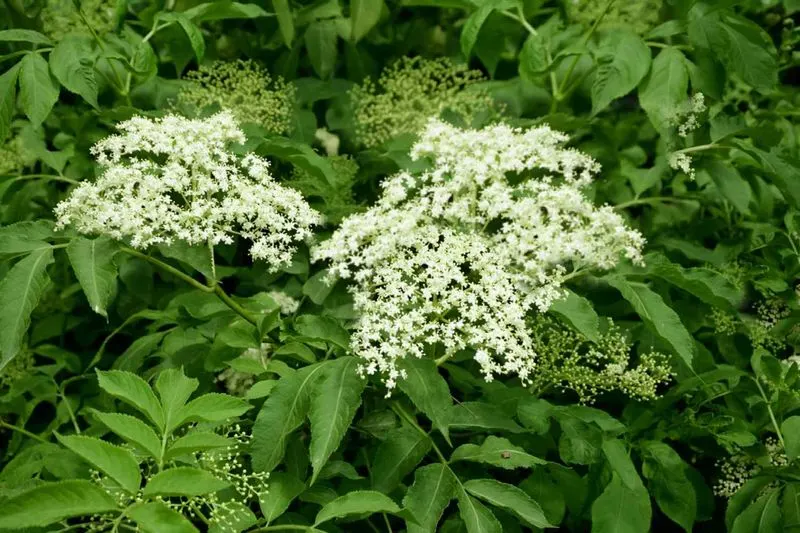
Elderberries offer both ornamental beauty and practical benefits. Leaving them unpruned in spring nurtures a fuller bush with increased floral and fruit production. The delicate white flowers give way to dark berries, which are both edible and attractive to wildlife. This natural approach minimizes maintenance, allowing elderberries to enhance the garden with minimal effort. The dense foliage provides shelter for birds and beneficial insects. By opting for unpruned elderberries, gardeners can enjoy both aesthetic appeal and a bountiful harvest. Let the plant fulfill its potential with a hands-off strategy.
Fuchsia
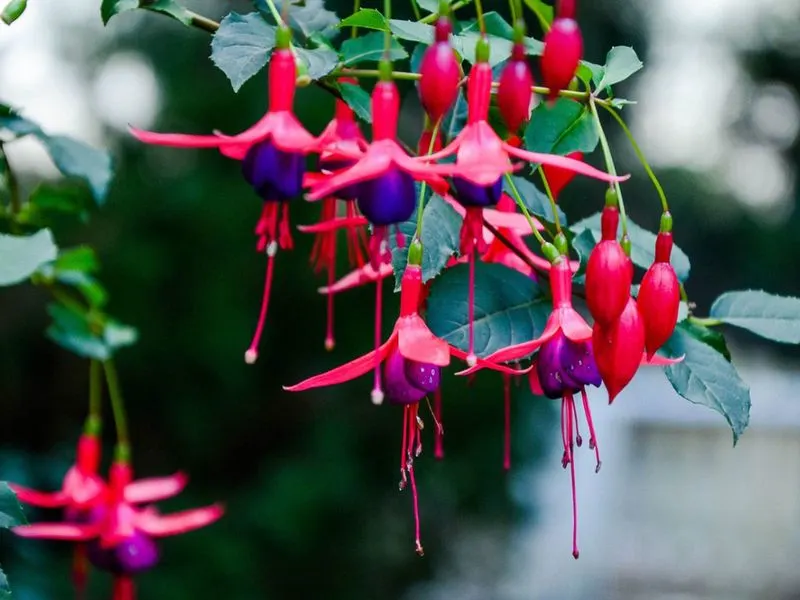
Fuchsias, with their pendulous blooms, thrive when allowed to grow freely. Avoid pruning in spring to encourage a cascade of vibrant flowers. These plants excel in containers or hanging baskets, where their beauty can be appreciated at eye level. The natural growth pattern of fuchsias provides a dense display of color, enhancing vertical spaces. By letting them grow unpruned, you allow the plant to focus on producing more flowers rather than recovering from cuts. This approach results in a healthier, more vibrant display. Celebrate the unique charm of fuchsias in your garden.
Rose of Sharon
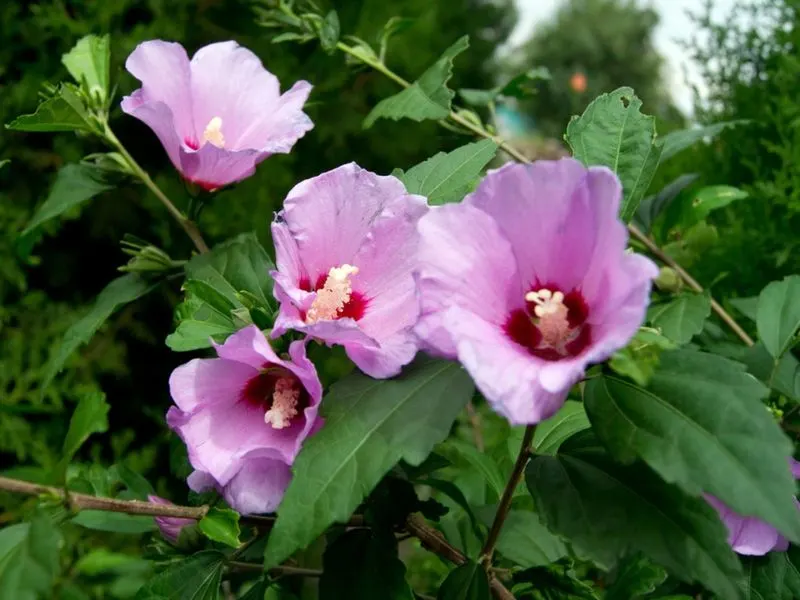
Rose of Sharon is a hardy shrub that shines when left unpruned during spring. This plant boasts an impressive display of large, tropical-looking flowers come summer. By allowing it to grow naturally, you encourage a bushier structure, which supports more blooms. The plant’s resilience is enhanced, making it less susceptible to environmental stressors. Unpruned Rose of Sharon also attracts pollinators, adding life to your garden. This easy-care approach allows gardeners to enjoy the vibrant blooms with minimal effort. Witness the full glory of Rose of Sharon by letting it grow unhindered.
Spirea
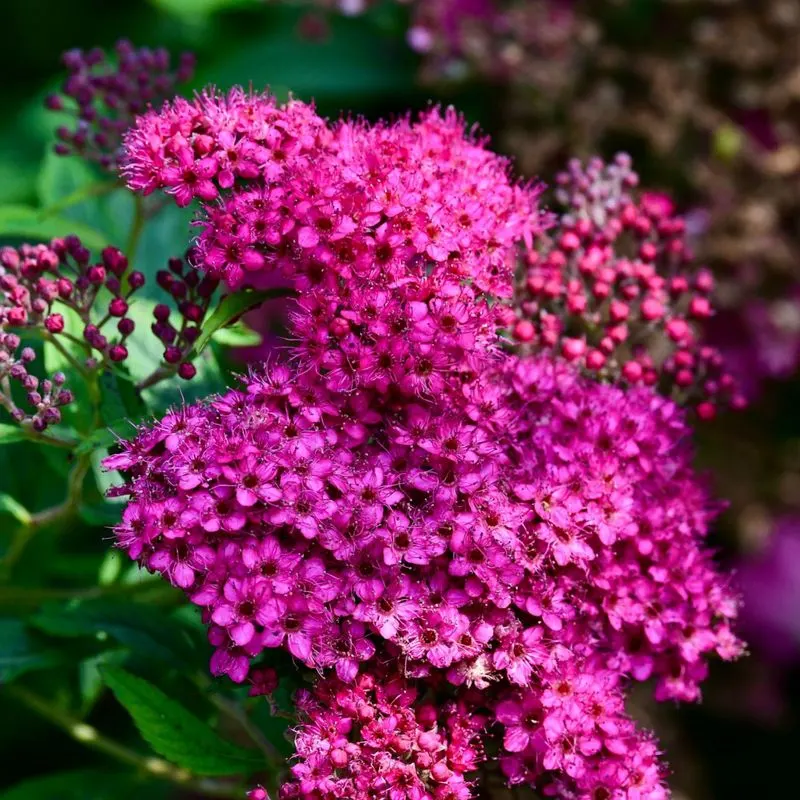
Spirea offers a delicate touch to garden borders with its petite blossoms. Avoid pruning in spring to let the plant develop its natural, graceful form. This hands-off approach results in a seamless, cascading appearance that softens the landscape. The profusion of tiny flowers attracts pollinators, enriching your garden ecosystem. By allowing spirea to grow unpruned, you minimize maintenance while maximizing visual impact. This method supports the plant’s overall health, ensuring longevity and continuous blooming. Enjoy the subtle elegance of spirea by embracing its natural growth tendencies.
Hawthorn
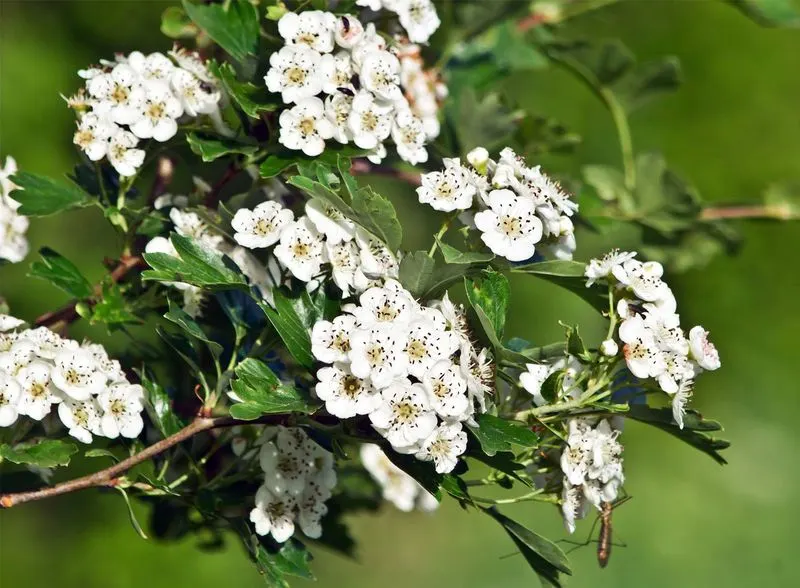
Hawthorn trees are a garden staple, cherished for their seasonal transformation. Letting them grow unpruned in spring encourages robust flowering and berry production. The small white blossoms add a touch of whimsy, while the red berries provide a pop of color. Unpruned hawthorn develops a stronger, more resilient structure, capable of withstanding harsh weather. This approach also supports local wildlife, offering food and habitat. By stepping back, gardeners can admire the dynamic beauty of hawthorn throughout the seasons. Enhance your garden with the timeless appeal of this versatile tree.
Weigela
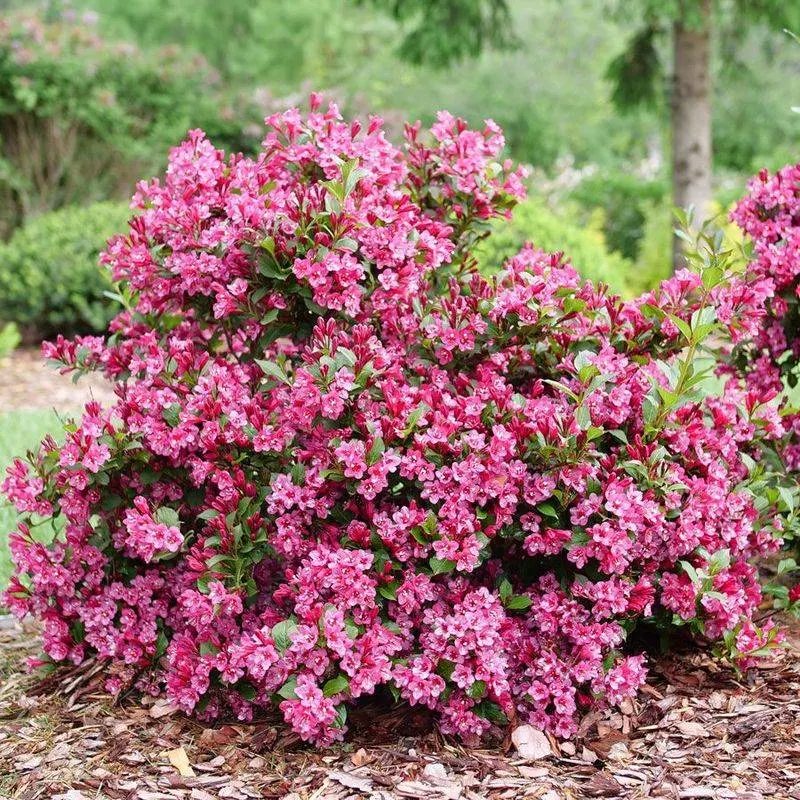
Weigela is renowned for its vibrant, tubular flowers that attract hummingbirds. Allowing it to grow unpruned in spring enhances its natural shape and encourages prolific blooming. This approach results in a more vigorous plant with stronger branches. The colorful flowers provide a lively contrast to the green foliage, adding dimension to garden designs. Unpruned weigela requires less maintenance and offers a more natural, relaxed appearance. By letting it grow freely, gardeners can enjoy a vibrant, wildlife-friendly garden feature. Bask in the delightful energy that weigela brings to any space.
Dogwood
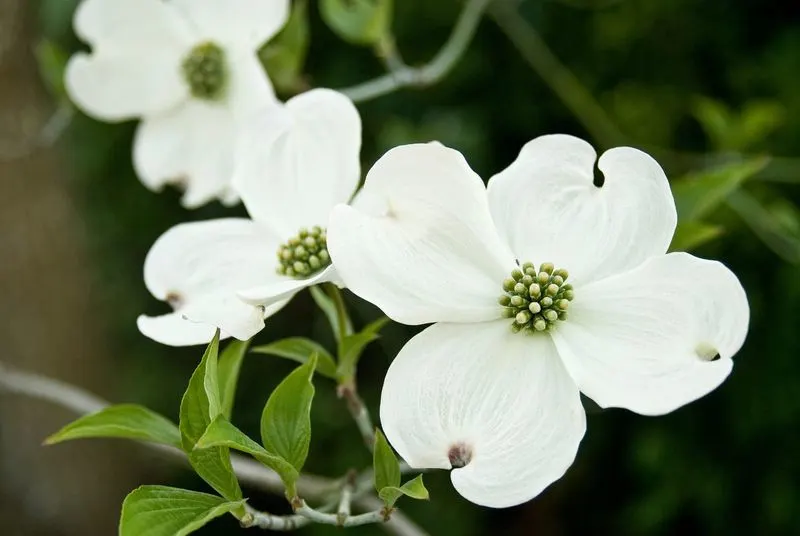
Dogwoods are beloved for their graceful flowers and striking bark. Allowing them to remain unpruned in spring fosters a dense canopy of blossoms. This natural growth method promotes a healthier tree with increased resilience. The flowers create a stunning contrast against the lush green leaves, offering a long-lasting visual treat. Unpruned dogwoods develop a more authentic, elegant form, reducing the need for corrective pruning. This approach supports the tree’s overall health, allowing it to thrive with minimal intervention. Enjoy the timeless beauty of dogwoods by respecting their natural growth.
Camellia
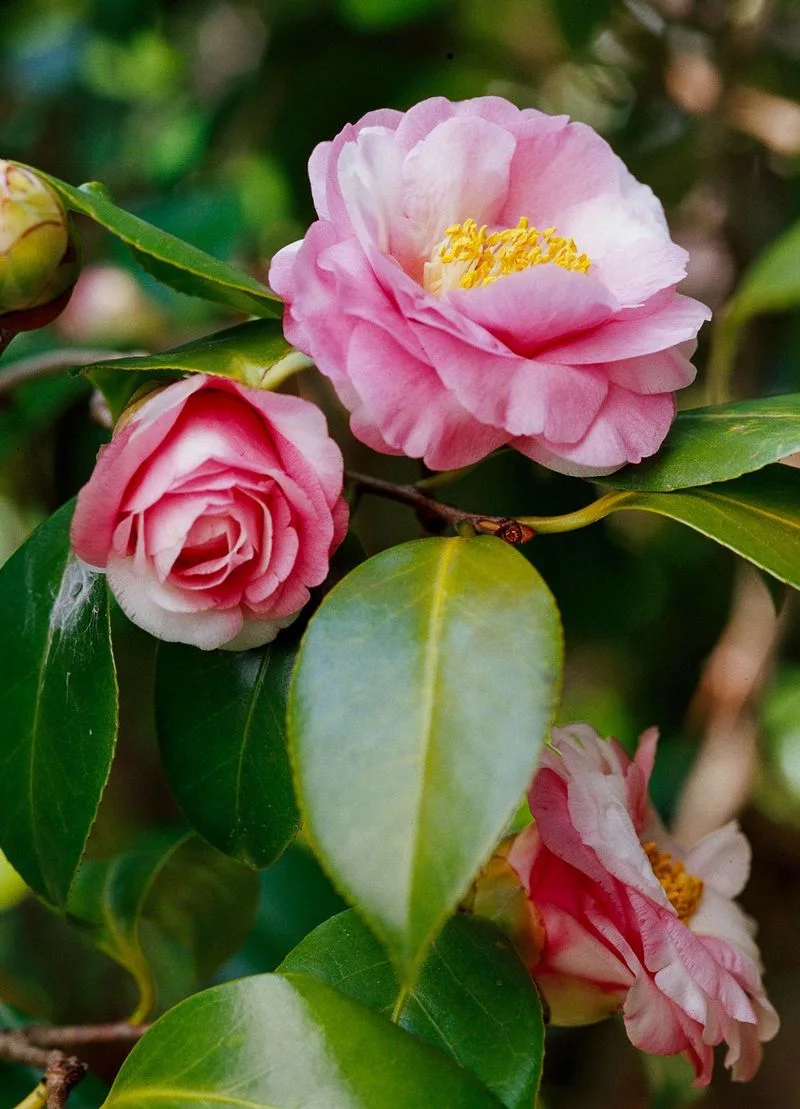
Camellias, with their glossy leaves and showy blooms, thrive when left unpruned in spring. This method allows the plant to focus on developing flowers, resulting in a more abundant bloom. The natural growth pattern lends a classic, elegant look to garden spaces. Unpruned camellias often exhibit greater resilience, adapting better to environmental stresses. The flowers provide a vibrant splash of color, brightening shaded areas. By embracing a hands-off approach, gardeners can enjoy the timeless charm and low maintenance benefits of camellias. Experience the serene beauty of camellias in full, uninhibited bloom.
Viburnum
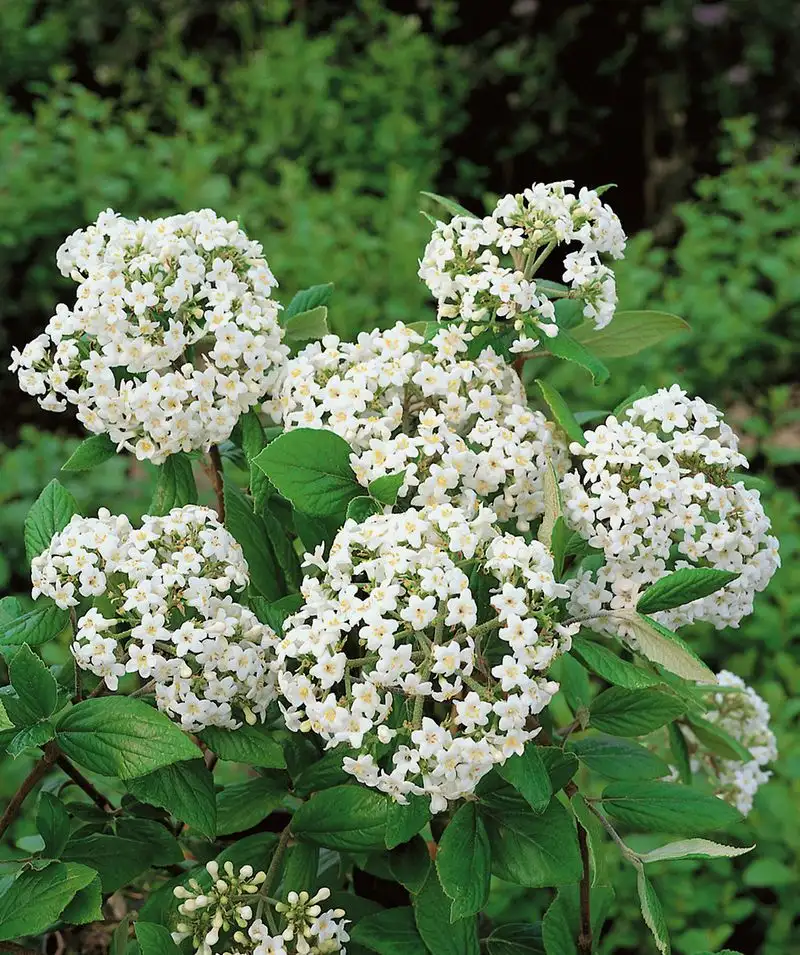
Viburnum bushes are versatile plants that benefit from a no-prune approach in spring. This strategy encourages a fuller, more prolific flowering display. The clusters of small white flowers add a touch of elegance, while the berries attract birds. Unpruned viburnum develops a natural, bushy form, enhancing its ornamental appeal. This approach reduces the need for frequent maintenance, allowing the plant to thrive with minimal effort. By allowing viburnum to grow freely, you enhance the biodiversity of your garden. Relish the understated beauty and ecological benefits that viburnum offers.
Mock Orange
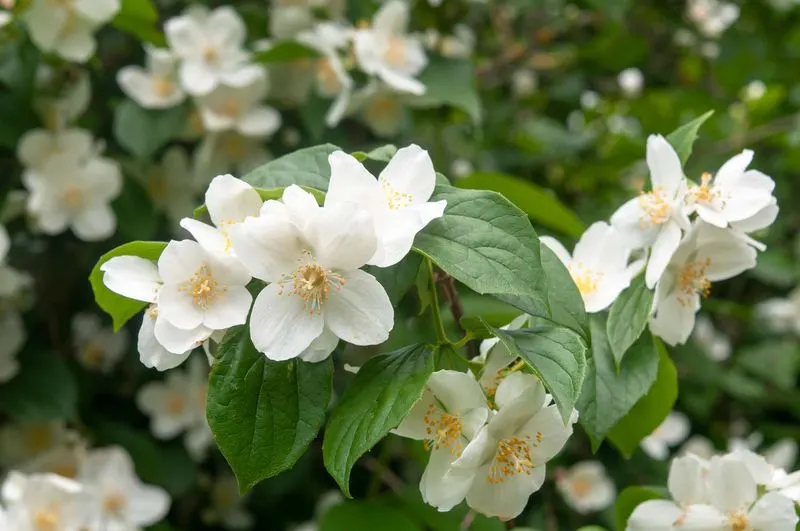
Mock orange captivates with its fragrant, citrus-scented blossoms. Allowing it to grow unpruned in spring maximizes the bloom potential. The white flowers create a sensory delight, paired with a lush backdrop of green foliage. This hands-off approach encourages a more natural, robust structure, supporting the plant’s health. By stepping back, gardeners enable the mock orange to achieve its full aesthetic potential. This strategy also attracts pollinators, enhancing the garden’s ecosystem. Enjoy the intoxicating aroma and visual appeal of mock orange by letting nature guide its growth.
Kerria Japonica
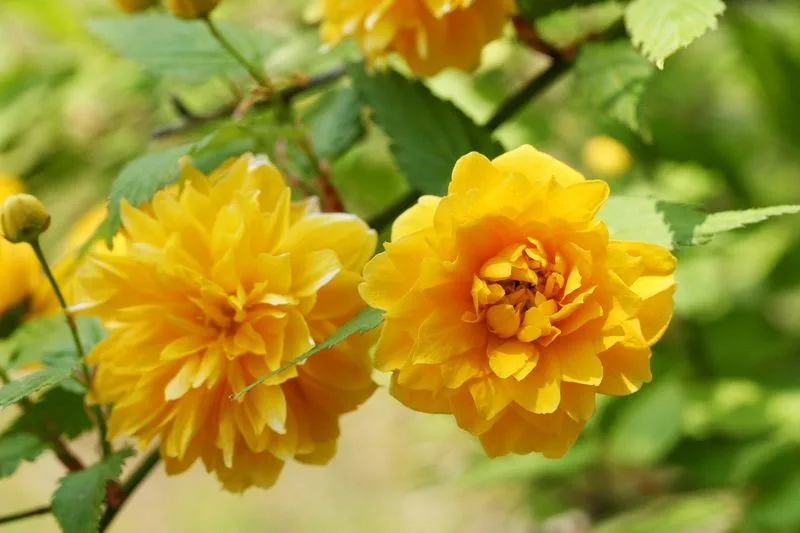
Kerria Japonica stands out with its cheerful yellow blooms. Letting it grow unpruned in spring allows for a fuller, more vibrant display. The plant’s natural arching branches add a whimsical touch to gardens. This approach fosters a more resilient structure, capable of withstanding environmental stresses. Unpruned Kerria Japonica requires less maintenance while offering more blooms. The plant’s bright flowers attract pollinators, enriching garden biodiversity. By embracing a hands-off method, gardeners can enjoy a carefree, colorful addition to their outdoor spaces. Revel in the joyful exuberance this plant brings to your garden.
Potentilla
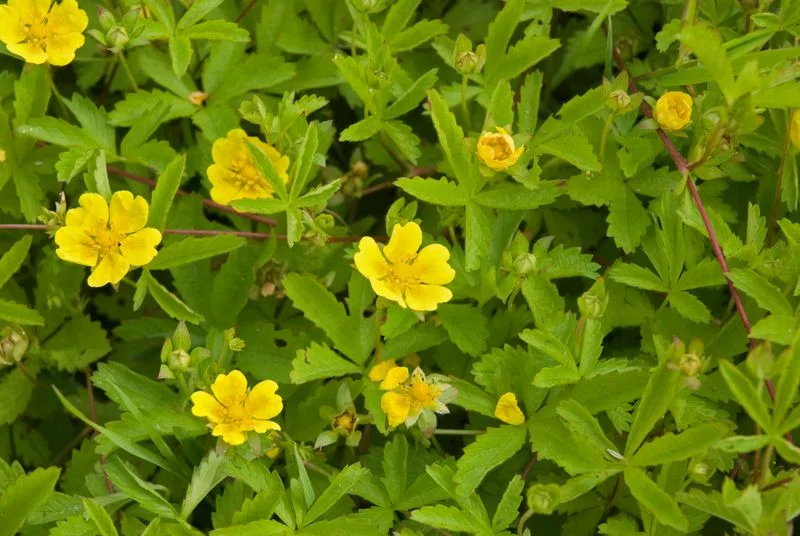
Potentilla is a hardy plant known for its vibrant yellow flowers. Allowing it to grow unpruned in spring ensures a more abundant bloom. The compact, bushy growth pattern adds structure to garden rockeries and borders. Unpruned potentilla thrives with minimal care, making it an ideal choice for low-maintenance gardens. This approach encourages stronger, healthier plants that resist pests and diseases. The cheerful flowers attract pollinators, benefiting the garden ecosystem. By letting potentilla grow naturally, gardeners can enjoy its bright, uplifting presence without the hassle of frequent maintenance.
Butterfly Bush
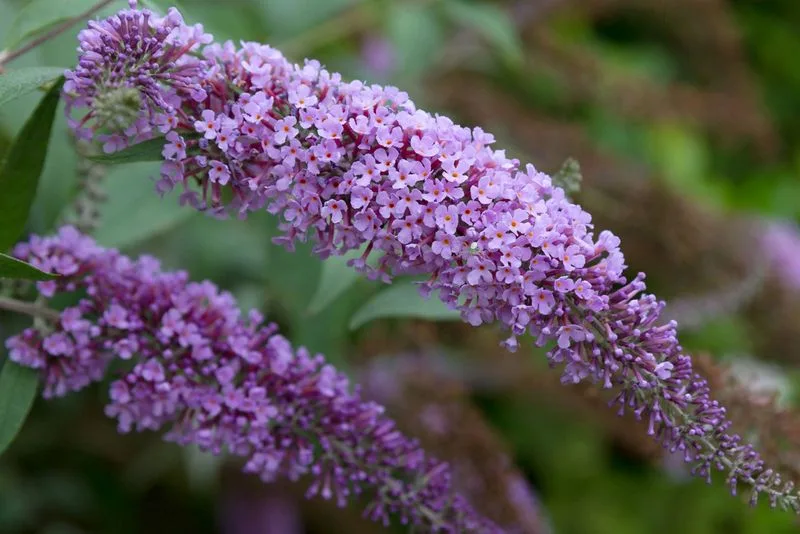
The butterfly bush is adored for its vibrant, nectar-rich blooms that attract pollinators. Allowing it to grow unpruned in spring enhances its natural shape and flowering potential. The long spikes of flowers offer a feast for butterflies and bees, enriching garden life. This hands-off approach promotes a bushier, more resilient plant. Unpruned butterfly bushes require less maintenance, allowing gardeners to focus on enjoying the beauty they bring. By letting it grow freely, you provide a vital resource for wildlife. Bask in the lively energy and ecological benefits of an unpruned butterfly bush.
Ninebark
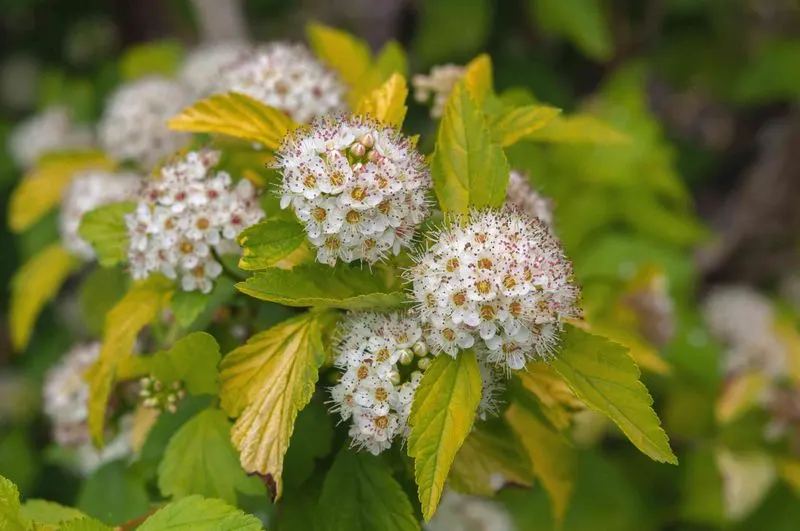
Ninebark is prized for its unique, peeling bark and delicate flowers. Allowing it to grow unpruned in spring highlights these natural features. This method supports a denser, more vigorous growth, enhancing the plant’s structural integrity. The small white flowers add a subtle charm, while the textured bark provides interest even in dormant seasons. Unpruned ninebark requires less intervention, making it a low-maintenance choice for gardens. By letting it grow naturally, you embrace the plant’s inherent beauty and resilience. Enjoy the distinctive allure and practicality that ninebark offers your outdoor space.
Snowberry
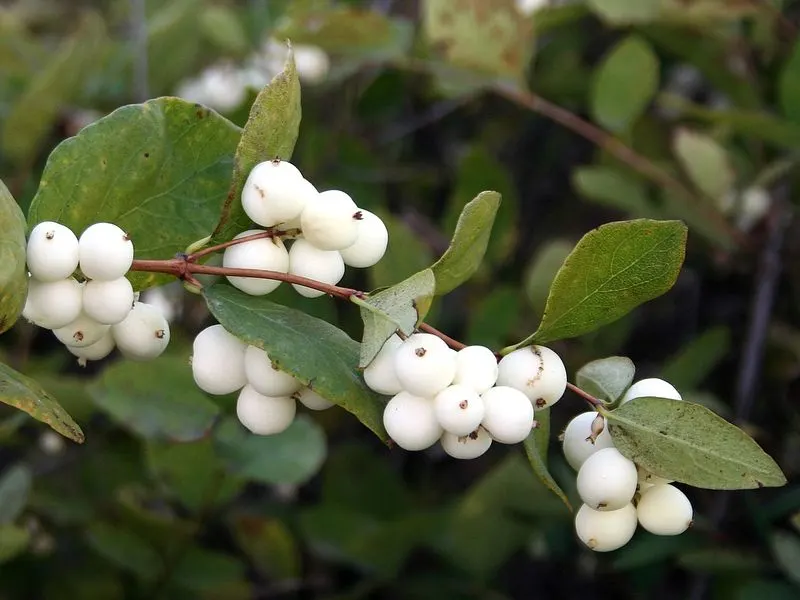
Snowberry bushes captivate with their distinctive white berries. Letting them grow unpruned in spring promotes a more natural, bushy form. This approach enhances berry production, providing a visual treat and food source for wildlife. The plant’s dense growth offers shelter for birds and beneficial insects. Unpruned snowberry requires minimal care, making it a practical choice for wild garden areas. By allowing it to flourish naturally, you support local biodiversity and enjoy a unique, ornamental feature. Relish the understated elegance and ecological benefits that snowberry brings to your garden.
Beautyberry
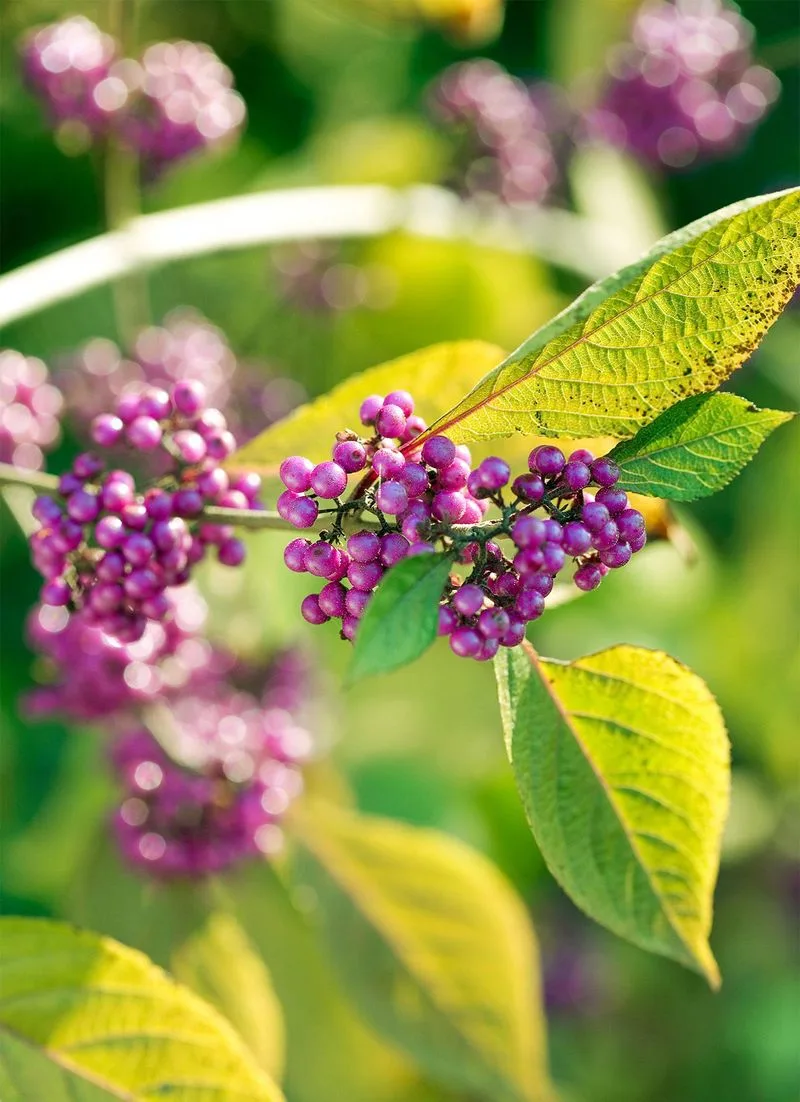
Beautyberry is known for its striking purple berries that add a pop of color to any garden. Allowing it to grow unpruned in spring encourages a fuller, more productive plant. This hands-off approach results in a dense, bushy form that showcases the vibrant berries. Unpruned beautyberry requires less maintenance, allowing gardeners to enjoy its ornamental appeal with minimal effort. The berries attract wildlife, enriching the garden ecosystem. By letting beautyberry grow naturally, you enhance both visual interest and biodiversity. Delight in the vivid color and low-maintenance charm that beautyberry offers.

